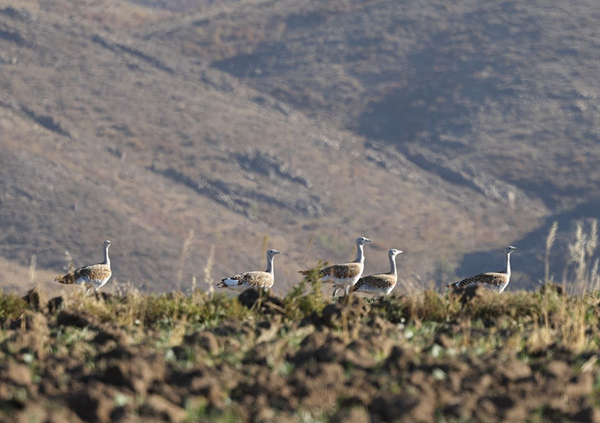
A joint study by researchers from the Xinjiang Institute of Ecology and Geography (XIEG) of the Chinese Academy of Sciences and Eurasian Bustard Alliance has found that anthropogenic disturbance is the main factor affecting the habitat quality of the Great Bustard population in Western China.
The results were published in Global Ecology and Conservation on Nov. 16.
The Great Bustard (Otis tarda) is currently listed as Vulnerable (VU) by the International Union for Conservation of Nature (IUCN). There are two subspecies of Great Bustard in China. The Eastern Great Bustard is distributed in the grasslands of Inner Mongolia, and the Yangtze and Yellow River basins. While the Western Great Bustard, O. t. tarda, is distributed only in Xinjiang, northwestern China.
Nearly 70% of the Western Great Bustard are found in Tacheng Basin. However, the number of the population counted has declined by over 90% over the last thirty years, and the reasons are not clear.
In this study, the researchers evaluated the habitat quality of Great Bustard in Tacheng Basin by using an ensemble species distribution model, revealed the key factors leading to the rapid population decline, and proposed specific conservation measures.
They found that the suitable habitat area of Great Bustard in Tacheng Basin was very small, only accounting for 9.9% of the total study area, and mainly distributed in the northern edge of the basin and the southern slope of Talbahetai Mountain.
The main factors affecting habitat quality of Great Bustard were distance to county road (anthropogenic disturbance), distance to farmland (food resources) and average summer temperature (reproduction and survival temperature).
The researchers suggested regulating bird photography and bird-watching tourism activities, seasonally reducing traffic on roads during breeding period, planting compatible crops, and establishing the Great Bustard protection demonstration area to protect the habitat of Great Bustard.

Great Bustard (Otis tarda tarda) (Image by XIEG)

86-10-68597521 (day)
86-10-68597289 (night)

52 Sanlihe Rd., Xicheng District,
Beijing, China (100864)

